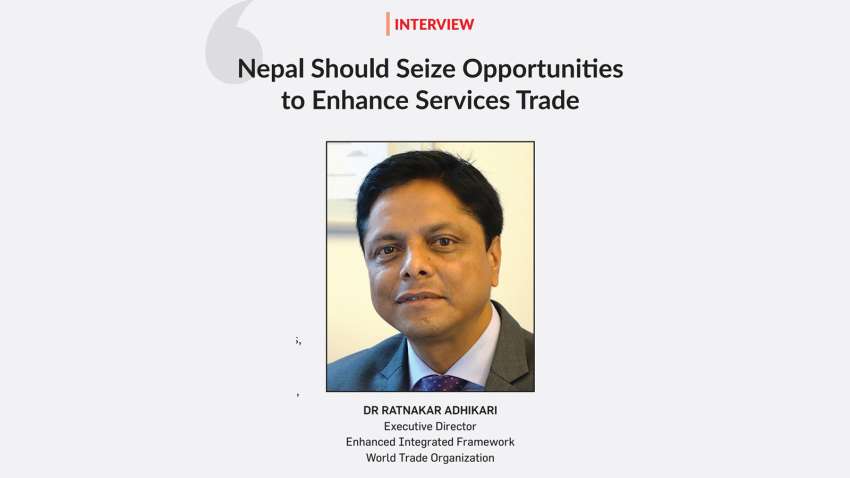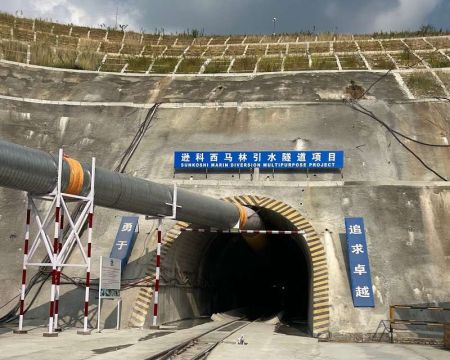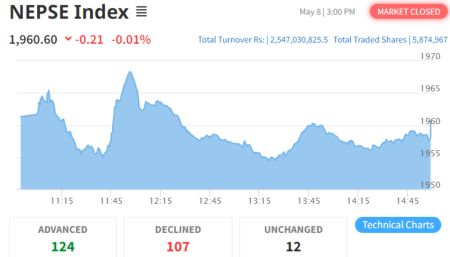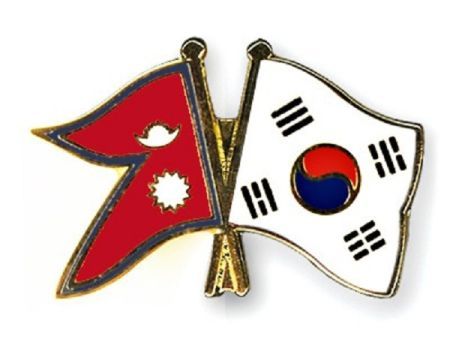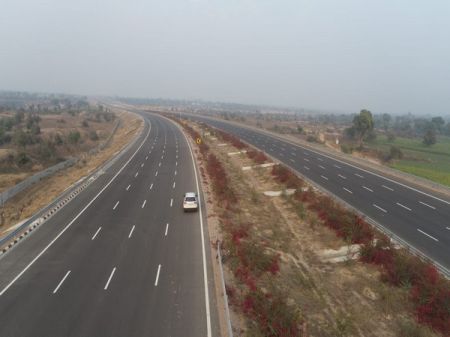The world shifted its trade focus toward services long ago. Isn’t Nepal already late to do that?
Yes, indeed. The services sector has experienced tremendous growth in the past 15 years. This sector now accounts for two-thirds of the global GDP. However, despite a reasonable degree of growth seen in the past decade, it only contributes to a little more than half of Nepal's GDP. Regarding commercial services exports, in 2021, Nepal's services exports were 2.4 times lower than its merchandise exports. Nevertheless, it is not too late, as an old proverb comes to mind: "The best time to plant a tree was 20 years ago; the second best time is now."
What policy challenges or supply-side constraints do you see that could be preventing Nepal from efficiently trading in services?
Policy challenges or supply-side constraints related to services trade do not fundamentally differ from those of merchandise trades. These challenges include: a) an unfriendly, if not hostile, policy environment and institutional set-up for doing business; b) a lack of trained human resources capable of effectively providing services; c) limited availability and quality of infrastructure; d) limited access to, and affordability of, technology; and e) limited access to finance.
However, some specific constraints directly impact services trade more than merchandise trade. Let me provide two examples. First, while the overall quality of infrastructure, including road conditions, is crucial for goods trade, air connectivity plays an extremely vital role in attracting international tourists and boosting tourism exports.
Second, in the context of supply-side constraints related to technology, we consider technologies that enhance the productivity of workers and the quality of outputs, such as tools, machines, and equipment, or technologies that help firms reduce production costs, such as streamlining workflows, optimising stock management, and reducing waste. However, for services exports, especially in software and catering to the growing demand for business process outsourcing, digital technology becomes indispensable.
What is expected of the government to enhance services exports?
The government has a twofold role to play. First, it must make significant efforts to improve the business environment and institutional set-up by streamlining laws, rules, and procedures governing trade in general and services trade in particular. Second, it should create conditions for resource mobilisation to address supply-side constraints. Here, we need to remain sympathetic to the inability of the government to take care of the entire resource requirement for these sectors. Nevertheless, if there is political will, resource mobilisation is not a significant problem. For example, the government can attract Aid for Trade (AfT) resources and catalyse them to leverage additional funding.
For example, in 2015, the Enhanced Integrated Framework (EIF) provided $3.15 million of AfT to Vanuatu, a Pacific Islands country, for the reconstruction of seafront infrastructure damaged by Cyclone Pam. The Government of Vanuatu was able to leverage an additional $15.8 million from New Zealand for the reconstruction. Consequently, the country is receiving an increasing number of tourists arriving by cruise ships.
Nepal will have graduated to a middle-income country from an LDC over the next few years. As a result, it will lose the privilege of preferential treatment in many of its crucial trade destinations, such as the EU. How should Nepal be preparing itself to face that situation?
Graduation from LDC status generally results in a preference erosion, especially if the preference utilisation rate is already high, as seen in the case of Bangladesh, where it stands at around 70%. However, according to a joint 2020 study by the EIF and the World Trade Organization titled "Trade Impacts of LDC Graduation," Nepal's limited preference utilisation means that the additional tariff to be paid would only amount to $7 million, equivalent to 0.9% of Nepal's exports.
This does not imply that Nepal should be complacent. It should, rather, undertake the following measures:
First, it should consider signing free trade agreements (FTAs) with some of its largest trading partners like Australia, Japan, Turkey, and the USA to diversify its markets. For instance, Cambodia, likely to graduate following Nepal, has already signed and ratified FTAs with China and South Korea, and joined and ratified the Regional Comprehensive Economic Partnership. Earlier in March, it signed another FTA with the United Arab Emirates which will help Cambodia establish its foothold in the Middle East.
Second, Nepal should reduce trade costs by improving trade facilitation measures, such as implementing paperless trade, to enhance the competitiveness of its products in the global market, which is crucial in light of preference erosion. According to a study conducted by the UN Economic and Social Commission for Asia and the Pacific, Nepal would be able to reduce its trade export time and cost by 80% by fully implementing the Asia Pacific Framework Agreement on Paperless Trade, which can contribute to increase its exports by 28%.
Third, Nepal should seize opportunities to enhance services trade to reduce its heavy reliance on goods exports. There are several services sectors where Nepal has already been doing well or has a potential to do a lot better. For example, tourism services contribute about 6.7% to Nepal's GDP, with a total impact of $2.2 billion, according to the World Bank.
Nepal has also been doing well on information and communications technology (ICT) services exports, with untapped potential in this area. In 2021, Nepal's ICT services exports were worth approximately $125 million, representing 23% of its exports of other commercial services. This not only surpasses the global average but also outperforms other LDCs in the region, such as Bangladesh (21%), Bhutan (17%), and Afghanistan (12.3%). Similarly, studies have also shown potential in non-traditional services exports, such as health, education, and high-end retail.
Are there any relevant successful case studies or best practices from other countries that Nepal can learn from in terms of services export promotion?
The best example that comes to mind is the remarkable success of the ICT services sector in our southern neighbour, which exported services worth $144 billion in 2021. However, this achievement did not happen overnight; it is the outcome of years of collective effort involving the government at both central and state levels, state-owned enterprises, the private sector, and academic institutions. India's active participation in the digital revolution from the beginning played a pivotal role in bolstering its ICT services exports.
The governments, particularly the states of Karnataka and Andhra Pradesh, deserve commendation for providing the necessary infrastructure and creating a conducive business environment that enabled the ICT sector to thrive. State-owned enterprises like MTNL and BSNL made the initial investments in basic digital technologies, which were later supported by the private sector including foreign investors.
The role of the private sector, starting with Tata Consultancy Services which played a major role in driving the growth of the ICT sector in India and beyond by establishing its presence in 55 countries over the past five decades, is not less important. Equally important was the role of educational institutions, such as the Indian Institute of Technology, in producing top class technically qualified human resources. Moreover, India's general education system, which helped produce an English-speaking workforce employed in sectors like Business Process Outsourcing, is also noteworthy.
Costa Rica in Central America is another country where the digital revolution has propelled services growth. The nation has retained its position in the top ten, including in 2022, for digitally delivered services such as ICT, finance, and other business services. This would not have been possible without a generally favourable business environment, high-quality digital infrastructure, the zeal of the private sector, including foreign investors, and the contributions made by academic institutions.
Can you provide some recommendations or strategies for Nepal to diversify its services export portfolio and capture new opportunities in the global market?
Although I have already responded to these questions in a different way, I would like to highlight three major areas that require priority attention.
First, a serious endeavour to expand services trade, which is even more important in the context of Nepal's impending graduation from the LDC category, cannot be left to chances. Therefore, improving the overall business climate to facilitate the growth of the services sector is the necessary first step. This should be followed by an overhaul of the policy environment and the institutional set-up to make it fit for purpose.
Second, investment in infrastructure and technologies, in particular digital ones, needs to be ramped up, as they provide the foundation in which the country can think of credibly building a non-traditional services exports sector. Examples include ICT (including software), finance (including fintech), health (including telemedicine), education (including online education) and professional services (including legal, accounting and architecture) sub-sectors. Once the investment needs are determined, the question of resources, whether to make public investments, facilitate private investment or catalyse development assistance to attract additional investment, needs to be addressed.
Third, investing in human capital, particularly in skills development and upgrading, is more important in the services sector than in the goods sector. This is partly because in many services sectors, staff/workers are required to remain in direct contact with customers, and any skill deficiency can expose the service provider to risks. However, skills development is not only about meeting the numeric threshold of human resources required in the industry, which is relatively easy, but also about ensuring that the quality of human resources meets the expectation of the industry.
One example that comes to my mind, based on the eTrade Readiness Assessment conducted in Nepal in 2017 by UNCTAD with the support of the EIF, still remains valid. It was estimated that Nepal used to produce around 5,500 graduates per year, but many of them lacked expertise in specialised areas and were not immediately employable. This is a classic problem that can be solved by enhanced coordination between the private sector and academic institutions, with the former contributing to curriculum development of the latter based on the demand of the market (requirements of the former) and the latter producing and supplying graduates based on the requirements of the market. This can be done with or without Government support.
Anything else that you would like to say?
It is not too late to initiate reform measures aimed at exploiting the vast untapped potential of the services sector. Addressing policy and regulatory constraints would be a crucial starting point, especially considering that some of these measures can be implemented with a stroke of a pen.


